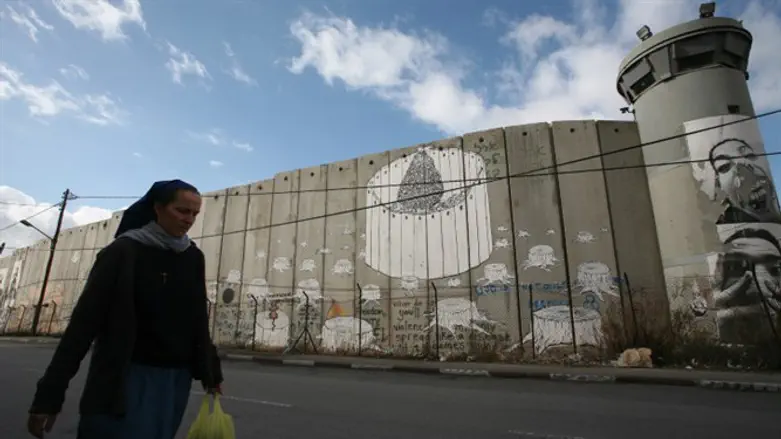
Prime Minister Binyamin Netanyahu and cabinet ministers held a tour of the Judean Desert and Gush Etzion area Tuesday, ahead of a discussion on the construction of a fence between Gush Etzion and and the Judean desert.
The work was halted in the past following protests by both Jewish and Arab residents of Judea and Samaria, as well as petitions against the fence submitted to the Supreme Court. The petitioners accuse the government of expropriating land and causing damage to the environment as well as to local Jewish-Arab relations.
"It is not clear why the government suddenly wants to expropriate land from Jews and Arabs, to cause the drying of springs in Wadi Fukin and in the springs stream, to demolish the Nahal Refa'im National Park and to trample the budding of coexistence under bulldozers," said Yaron Rosenthal, one of the leaders of the struggle against the construction of the fence.
Azaria Alon, founder of the Society for the Protection of Nature in Israel, added: "The environmental organizations are well aware of the security needs, but when it comes to the separation fence it seems that all the severe environmental and landscape damage it causes is marginalized and does not receive any consideration, despite their tremendous significance for the Israeli ecosystem in general and in the Judean Desert in particular."
According to the activists, the environmental damage caused by the fence would be the largest of any fence in Israel's history, due to the length of the fence (more than 435 miles) and its vast width (about 164-230 feet).
The activists stated: "In the Israeli consciousness, the 'separation fence' improved the security of Israeli citizens during the terrible Second Intifada, but those who followed the progress of the fence and the decline in terror attacks know that the attacks stopped two years after Operation Defensive Shield, when the IDF arrested wanted persons in Palestinian cities. Most of the fence had not yet been built at that time. The concept of the fence is based on the control of the IDF forces on one side of the fence (as on the Egyptian border). Today, when the army sits on both sides of the fence, the fence becomes completely redundant. The fence in the Judean desert is particularly puzzling because it is an exposed area, with no people and structures through which the entire area can be controlled with cameras and electronic means."